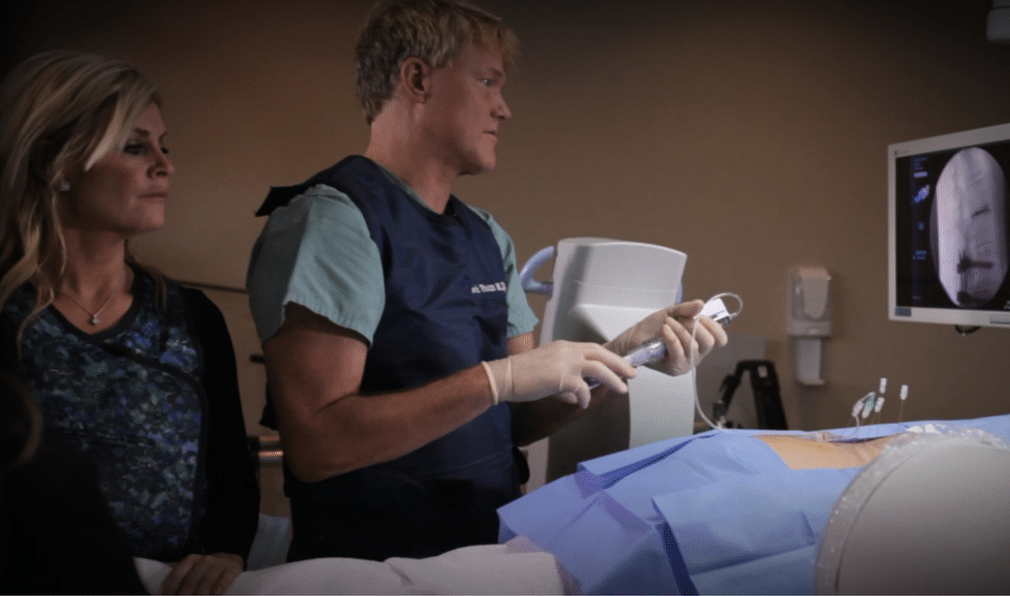It’s no secret that low back pain is a leading cause of “unwanted” lost workdays. Low back pain is not a disease, but instead may be caused by several problems, the most common being degenerative discs.1 Degenerative discs may also lead to facet joint arthritis pain and “sciatica” nerve pain.
To help pinpoint pain sources, discography was historically offered because MRIs couldn’t reliably identify pain. Discography was used to plan spine surgery, however, today spine fusions themselves are being questioned because of long-term fusion concerns.
Discography was introduced in the 1940s. During discography, x-ray contrast is injected into the center of discs (called the nucleus pulposus), pressurizing those discs in an attempt to reproduce symptoms while visualizing disc tears. During discography, contrast pressurizes the disc, and the resultant x-ray picture is referred to as a “discogram”. Although it’s known that MRIs and CTs can’t reliably identify pain, scientific critics of discography state that pressurizing discs from their “inside out” doesn’t necessarily reproduce a natural situation, so any pain a patient experiences during discography, whether similar (concordant) or not, may be irrelevant.
A respected study from Stanford University compared disc degeneration in patients who underwent discography with those who didn’t undergo discography, and all patients were followed for 10 years following discography. This study found that those who underwent discography suffered from accelerated disc degeneration, more new disc herniations, and also significant disc height loss when compared to the control group.2
Therefore, we are refining and perfecting a test called an annulogramTM to replace discography. An annulogramTM is a more delicate and refined test that injects a smaller volume of x-ray contrast with less pressure, pinpointing only the outer portion of the disc (annulus fibrosis) where pain nerve endings reside. This is because it’s known that pain begins as small, often undetectable outer annular tears, and these outer tears may go unseen in discograms and MRIs.
- Low Back Pain Leading Cause of Disability Worldwide: Study – WebMD
http://www.m.webmd.com/back-pain/news/20140325/low-back-pain-leading-cause-of-disability-worldwide-study) - http://www.ncbi.nlm.nih.gov/pubmed/19755936, Spine (Phila Pa 1976). 2009 Oct 1;34(21):2338-45. doi: 10.1097/BRS.0b013e3181ab5432. 2009 ISSLS Prize Winner: Does discography cause accelerated progression of degeneration changes in the lumbar disc: a ten-year matched cohort study. Carragee EJ, Don AS, Hurwitz EL, Cuellar JM, Carrino JA, Herzog R.

